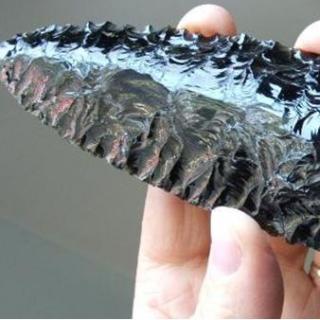
介绍:
Lecture3-Archaeology(Clovis Culture)
Narrator
Listen to part of a lecture in an archaeology class.
Professor
We will be looking at the original settlement of the Americas next, and I’ll spend the next few classes talking about the Clovis people and the two big questions archaeologists have about them.
The two big questions are, when did the Clovis people arrive in the Americas? And of course, were they the first people in the Western hemisphere. And we’ll get to that. But for today, let’s try to get an idea about, well, a question that’s not addressed as much as the others and that’s – what was their culture like? And how do we figure that out?
Now, again, there’s a great debate about when the Clovis people first arrived in the Americas. And I am not like a lot of archaeologists who want to push the number way back, so let’s use a round number and probably a safe number and say 11,000 years ago. The Clovis people were likely settling North America 11,000 years ago. And leave it at that for now.
Now, most of what we know about the Clovis people comes from one of their tools—the Clovis point. When we talk about a point we are referring to a piece of stone that’s worked to a sharp point, in this case probably to be attached to a spear. The Clovis point may be the most analyzed artifact in archaeology. And the point used by Clovis people differs slightly from later points, in the way that the base of the stone is thinned, uh, it’s thinner toward the base, the part that’s attached to the spear. So when one is found, it’s usually not confused with points made by later groups.
Clovis points have been discovered at both hunting grounds and camp sites, which you might expect. But another fascinating place we find them is in Clovis caches. A cache is just something stored or hidden away. It’s also the term for the place where it’s hidden.
The Clovis caches are collections of tools, stone points and other tools made of stone or bone, often at various stages of manufacturing, some were left unfinished. The traditional explanation is that these were emergency supplies, uh, meant to be used at a later time. Since the Clovis people were highly mobile, it’s plausible that they would set up spots along established travel routes where they keep a variety of items. Either so that they wouldn’t have to carry everything with them or so they could save time once they arrived at a site by not having to make stuff from scratch.
But there’s another theory about the caches based on the quality of some of the points we’ve found. You see, the points in some caches differ from other points, from points at Clovis camp sites for example. For one thing, these cache points are quite large, up to twice as large as regular points, so big that you couldn’t attach one to a spear say, and expect to throw the spear accurately over any distance. So what were they for?
Well, it was originally thought that they were unfinished, that someone was working away a point, then had to stop and put it aside in one of these caches to work on later. The problem is: it’s unlikely that a point would have started out as large as the points in these caches, that would be a lot of stone to chip away. A toolmaker starts with a smaller piece. And actually, far from being unfinished, a lot of these points really show excellent craftsmanship and attention to detail. And not just with respect to the skill, but also with respect to the raw material, it seems that cached points are made from the very best pieces of stone.
So we have to ask—could these points have served another purpose? Maybe be they weren’t just tools. Look at it this way. When the Clovis people first arrived in the Americas, they had a lot to learn about their new environment. Over time, they would have begun to recognize some places as special, important for some reason. Maybe there was always water available there. Or the hunting was especially good. So maybe the cache was a way to mark the place as significant.
大家还在听

